The Blue Ridge Parkway, often hailed as “America’s Favorite Drive,” is a stunning 469-mile scenic byway that meanders through the majestic Appalachian Mountains, connecting Shenandoah National Park in Virginia to the Great Smoky Mountains National Park in North Carolina. Originally conceived to link these two national treasures, the parkway has become a destination in its own right, attracting millions of visitors each year with its breathtaking vistas, diverse ecosystems, and rich cultural history. Whether you have a few days or a full week, a road trip along the Blue Ridge Parkway promises an unforgettable adventure.
Planning Your Blue Ridge Parkway Adventure
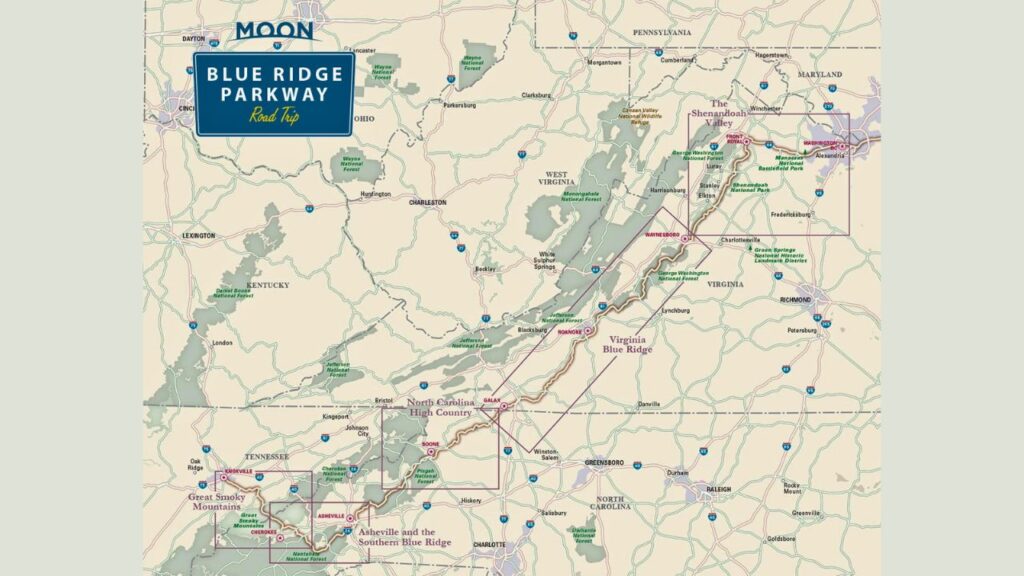
Before embarking on your journey, careful planning is essential to make the most of your experience. Here are some key considerations:
Best Time to Visit
The Blue Ridge Parkway offers distinct beauty in every season:
- Summer: The summer months (June-August) provide pleasant temperatures and lush greenery, making it an ideal time for hiking and outdoor activities.
- Fall: Autumn (late September to mid-October) is arguably the most popular time to visit, as the parkway transforms into a vibrant tapestry of fall foliage. However, be prepared for larger crowds during this peak season.
- Spring: Spring (April-May) brings blooming wildflowers and a renewed sense of life to the mountains.
- Winter: While some sections of the parkway may close due to snow and ice, winter offers a unique, serene beauty. Check the parkway’s official website for road closures before your trip.
Duration of Your Trip
You can tailor your Blue Ridge Parkway road trip to fit your available time:
- 3-4 Days: This timeframe allows you to experience the highlights of the parkway.
- 5 Days: A 5-day itinerary provides a more relaxed pace and allows for deeper exploration of different regions.
- 1 Week: With a full week, you can immerse yourself in the natural beauty and cultural attractions along the entire length of the parkway.
Essential Tips for Your Drive
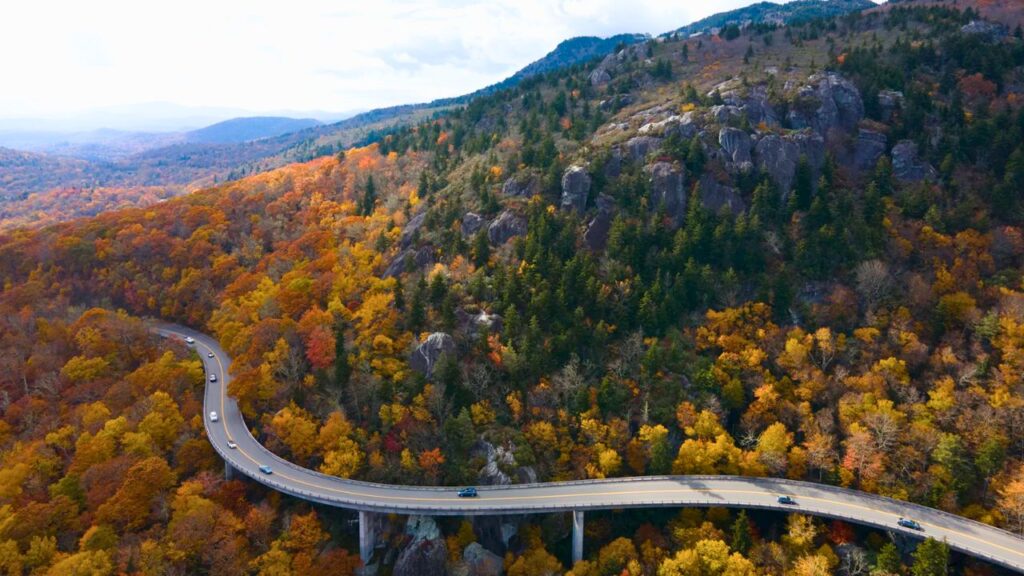
To ensure a smooth and enjoyable road trip, keep these tips in mind:
- Speed Limit: The speed limit on the Blue Ridge Parkway is generally 45 mph, encouraging a leisurely pace to soak in the scenery.
- Wildlife: Be vigilant for wildlife, including deer and bears, which are frequently seen along the parkway.
- Cyclists: Share the road with cyclists, who also enjoy the scenic routes.
- Rockslides: Be aware of the potential for rockslides, especially after periods of heavy rain.
- Layered Clothing: Mountain temperatures can fluctuate, so pack layers to stay comfortable.
- Navigation: Cell phone reception can be spotty in certain areas. Download offline maps or carry a paper map. The Blue Ridge Parkway uses mileposts instead of traditional addresses for navigation. Consider using the Blue Ridge Pkwy Travel Planner app.
- Fuel and Supplies: Gas stations and amenities are limited along the parkway itself. Ensure you have a full tank of gas, snacks, and water before entering the parkway. Electric vehicle drivers should plan for charging stations in nearby towns.
Must-See Stops and Highlights Along the Parkway
The Blue Ridge Parkway is brimming with breathtaking overlooks, hiking trails, historic sites, and charming towns. Here’s a glimpse of some of the highlights you won’t want to miss, organized by region as suggested in one of the references:
The Ridge Region (Northern Virginia)
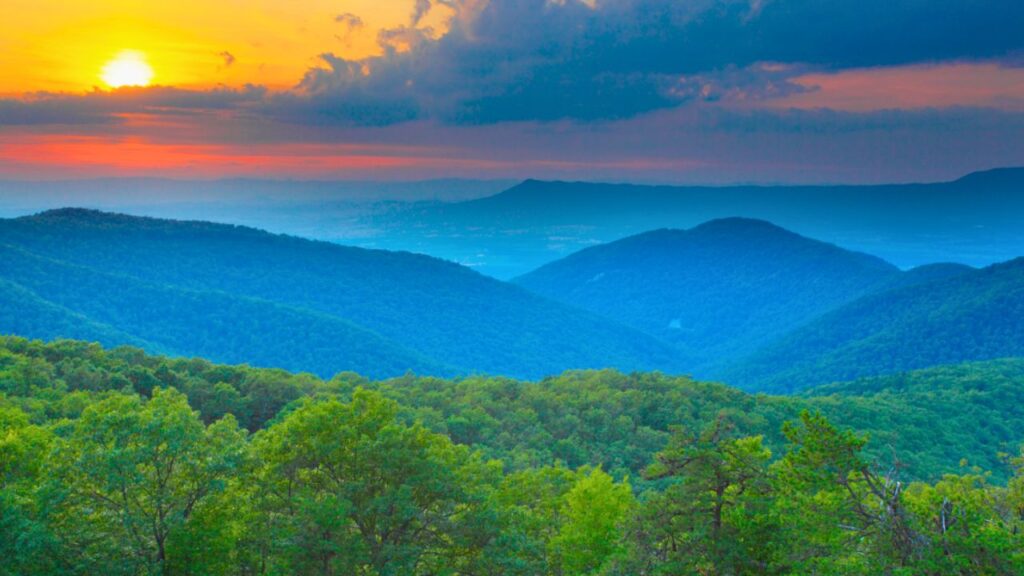
This section marks the northern gateway to the Blue Ridge Parkway, near Shenandoah National Park.
- Humpback Rocks (Milepost 5.8): A popular spot for a moderate to strenuous hike with rewarding panoramic views.
- Greenstone Overlook (Milepost 8.8): Offers beautiful views of the surrounding mountains.
- Yankee Horse Ridge (Milepost 34.4): Features a cascading waterfall accessible via a short walk.
- Thunder Ridge (Milepost 109.1): Offers expansive views and is home to the Appalachian Trail crossing.
- Peaks of Otter (Milepost 86-87): A stunning area with a lake, hiking trails (including Sharp Top Mountain), and the historic Peaks of Otter Lodge.
The Plateau Region (Roanoke Area)
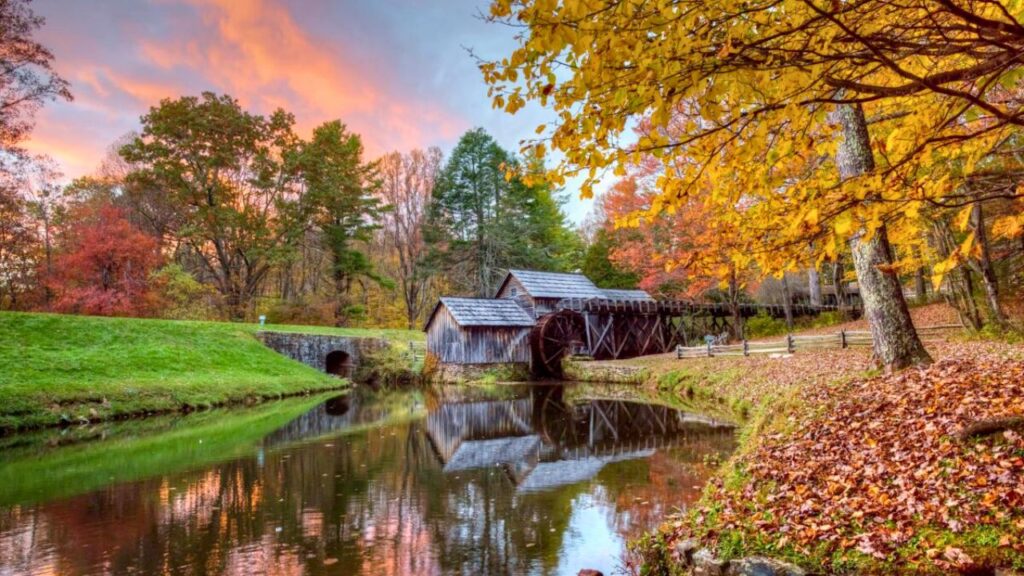
As you continue south, you’ll enter the region around Roanoke, Virginia.
- Downtown Roanoke: While not directly on the parkway, a short detour to downtown Roanoke offers cultural attractions, restaurants, and shops.
The Highlands Region (Near the Virginia-North Carolina Border)
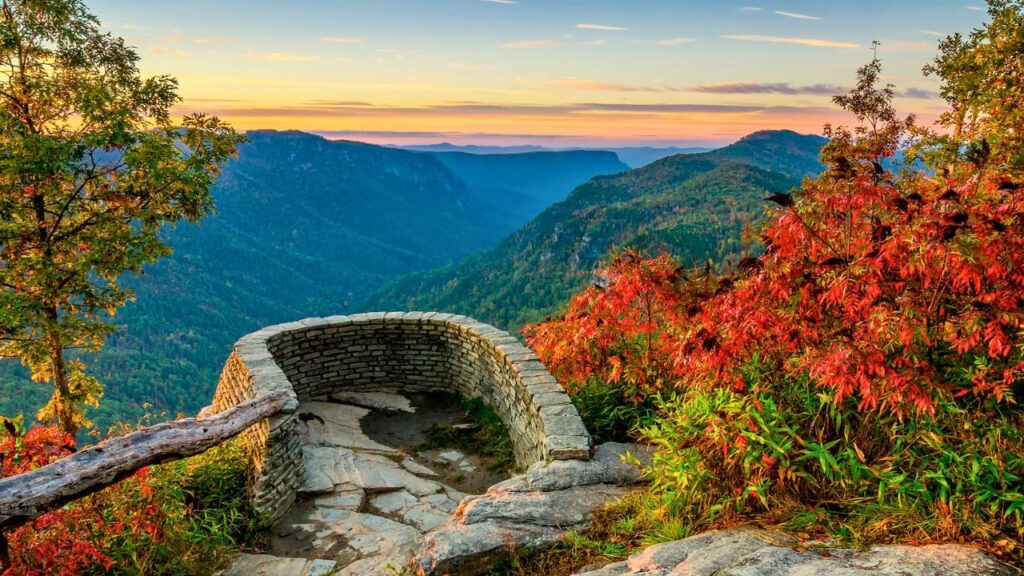
This section boasts rolling hills, meadows, and stunning vistas.
- Cumberland Knob (Milepost 217.5): The first recreation area built on the Parkway, offering gentle trails and scenic views.
- Doughton Park (Milepost 238.5-244.7): One of the largest recreation areas, perfect for hiking, camping, and picnicking with stunning open meadows.
- E.B. Jeffress Park (Milepost 272): Features the Cascades Trail, leading to a beautiful waterfall, and overlooks with impressive views.
- Moses Cone Memorial Park (Milepost 292.7-295): Home to Flat Top Manor, a historic mansion, and miles of carriage trails perfect for walking and horseback riding. The Bass Lake is also a highlight.
- Blue Ridge Music Center (Milepost 213): Celebrate the musical heritage of the region with live performances and exhibits.
- Puckett Cabin (Milepost 189.9): A preserved cabin offering a glimpse into the lives of early residents.
The Pisgah Region (Western North Carolina)
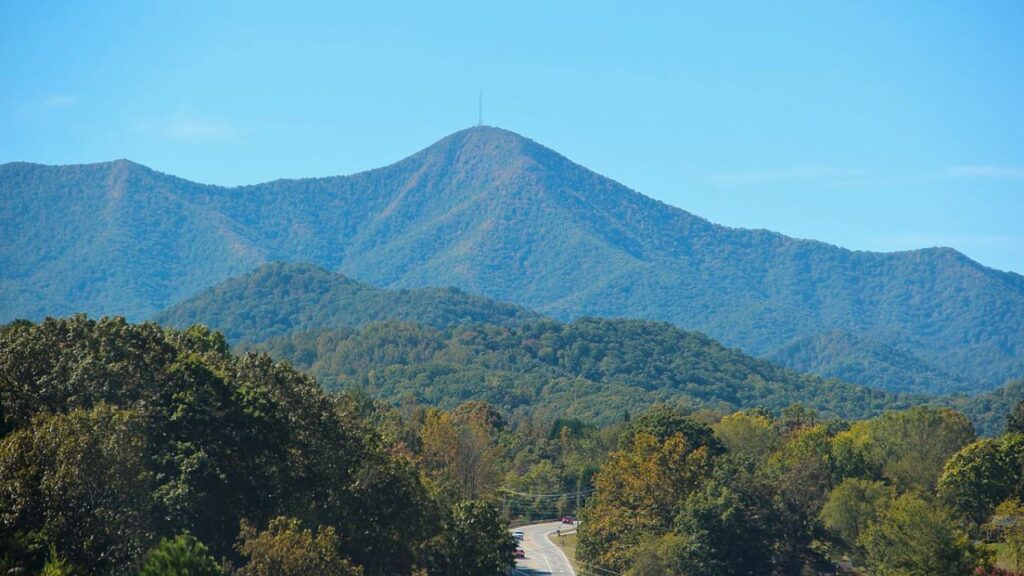
This section encompasses the highest elevations and most dramatic mountain scenery.
- Linn Cove Viaduct (Milepost 304.4): An engineering marvel that gracefully curves around Grandfather Mountain, offering spectacular views.
- Linville Falls (Milepost 316.4): A stunning multi-tiered waterfall with several viewing platforms.
- Mount Mitchell State Park (off Milepost 355): The highest peak east of the Mississippi River, offering panoramic views (weather permitting).
- Craggy Gardens (Milepost 364.6): Known for its gnarled trees and beautiful rhododendron blooms in the early summer.
- Folk Art Center (Milepost 382): Showcase of traditional and contemporary craft from the Southern Appalachians.
- Mount Pisgah (Milepost 407.6): Offers hiking trails and stunning views, including the historic Pisgah Inn.
- Graveyard Fields (Milepost 418.8): Unique landscape with several waterfalls and a popular hiking destination, especially beautiful in the fall.
- Richland Balsam Overlook (Milepost 431.4): The highest point on the Blue Ridge Parkway, offering breathtaking long-range views.
- Waterrock Knob (Milepost 451.2): Another high-elevation overlook with stunning views and a visitor center.
Sample Itineraries
Here are a couple of sample itineraries to inspire your Blue Ridge Parkway road trip:
3-Day Itinerary (Focusing on Virginia and the Northern Part of North Carolina)
| Day | Region | Highlights |
| 1 | The Ridge | Humpback Rocks, Peaks of Otter, Natural Bridge (nearby) |
| 2 | The Highlands | Cumberland Knob, Doughton Park, Moses Cone Memorial Park, Blowing Rock (nearby) |
| 3 | Blowing Rock/Pisgah | Linn Cove Viaduct, Linville Falls, optional short hike |
5-Day Itinerary (Covering the Entire Parkway)
| Day | Region | Highlights |
| 1 | The Ridge | Humpback Rocks, Greenstone Overlook, Yankee Horse Ridge, Thunder Ridge, Peaks of Otter |
| 2 | Roanoke/Plateau | Explore Roanoke (optional), Mabry Mill (nearby) |
| 3 | The Highlands | Cumberland Knob, Doughton Park, E.B. Jeffress Park, Moses Cone Memorial Park, Blue Ridge Music Center |
| 4 | Blowing Rock/Pisgah | Linn Cove Viaduct, Linville Falls, Mount Mitchell State Park, Craggy Gardens |
| 5 | Asheville/Pisgah | Folk Art Center, Mount Pisgah, Graveyard Fields, Richland Balsam Overlook, Waterrock Knob, explore Asheville |
Immersing Yourself in the Experience
Beyond the stunning scenery, the Blue Ridge Parkway offers opportunities to connect with nature and history. Take time to:
- Hike: Numerous trails cater to all skill levels, from short strolls to challenging climbs.
- Picnic: Enjoy a meal amidst breathtaking views at one of the many picnic areas.
- Visit Historic Sites: Explore preserved cabins, mills, and estates that tell the story of the region’s past.
- Listen to Music: Experience the rich musical heritage of the Appalachians at the Blue Ridge Music Center.
- Observe Wildlife: Keep an eye out for deer, black bears, birds, and other wildlife.
A Blue Ridge Parkway road trip is more than just a drive; it’s an immersion into the natural beauty and cultural heritage of the Appalachian Mountains. With careful planning and an adventurous spirit, you’re sure to create memories that will last a lifetime. So pack your bags, prepare your playlist, and get ready to experience the magic of “America’s Favorite Drive.”

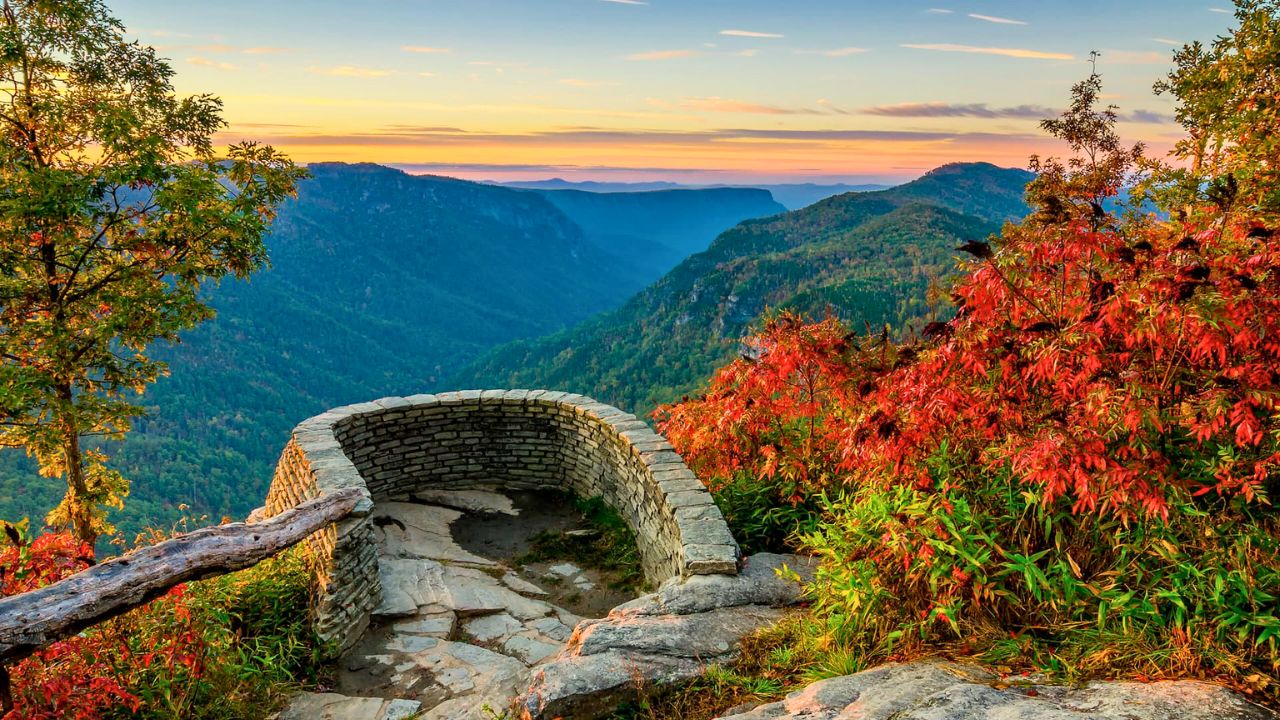
Leave a Reply